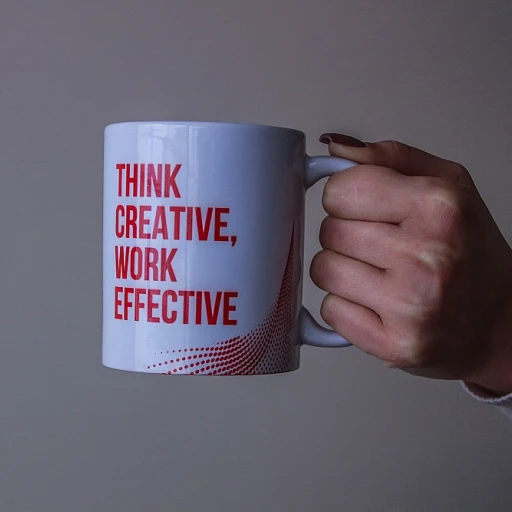
The Basics of an Intake Form
Introduction to the Fundamentals of Intake Forms
An intake form serves as the cornerstone of the onboarding process across various industries, facilitating a seamless connection between businesses and potential clients. It is a crucial element in understanding the specific needs and preferences of new clients, simplifying the initiation into services offered. Whether you're in healthcare dealing with patient intake forms, or in law firms focusing on legal details, these forms capture essential data to tailor a personalized client experience.
The client intake process begins with crafting forms that focus on collecting pertinent information. This might involve questions pertaining to a client’s medical history, personal details, or health history, depending on the nature of the service being provided. This introductory phase is critical as it sets the tone for ongoing interactions and ensures that the service provider has all the necessary information to proceed effectively.
Incorporating templates can significantly reduce the time it takes to design these forms, making the process more efficient and error-free. A pre-boarding process that emphasizes proper paperwork and documentation is beneficial in capturing accurate data from the outset. Utilizing a form builder can further streamline the creation of intake forms, providing flexibility to suit specific client needs.
An effective intake form acts as a first impression, often determining how clients perceive the professionalism and readiness of a business to cater to their needs. This initial contact requires careful consideration and a strategic approach to ensure that all relevant information is gathered, laying a strong foundation for a successful client relationship.
Why Intake Forms Matter in Onboarding
Significance of Intake Forms in Onboarding
The intake process plays a critical role in the overall onboarding experience, offering an organized approach to managing and integrating new clients. It is not just about getting a client’s information—it's about setting the stage for a smooth and professional client experience. Well-designed intake forms help businesses efficiently gather necessary details, streamline the onboarding process, and lay the groundwork for a fruitful relationship.
Imagine a law firm using a detailed client intake form. These forms collect pertinent details such as legal and health history, ensuring law firms can cater services to specific client needs from the start. By addressing legal and health aspects, intake forms remove potential hurdles that could delay service delivery. They’re indispensable, especially in sectors like the legal industry where client details and requirements need meticulous management right at the beginning.
Additionally, intake forms are crucial in saving time by pre-emptively clarifying what clients seek from their engagement. This efficiency allows businesses not only to deliver services effectively but also to allocate resources judiciously. By identifying the specific needs of a potential client early, businesses can tailor their onboarding strategies, which ultimately enhances client satisfaction and fosters client loyalty.
Moreover, using form templates or a form builder streamlines data collection, enabling consistent and standard operations. In industries like healthcare, patient intake and medical history forms are standardized to ensure key information is captured to support the patient's health management accurately.
The significance of the intake form extends beyond immediate onboarding tasks; it lays a pivotal foundation for ongoing communication and relationship building with the client. In essence, it's the bridge connecting clients to a company’s services in a personalized manner, fostering trust and confidence right from the get-go.
Key Elements of an Effective Intake Form
Essential Components of a Comprehensive Intake Template
When creating an intake form, certain elements are crucial to ensure a smooth onboarding process. These elements help businesses gather essential information, helping them understand their clients better, facilitating a more personalized service provision.- Basic Information: Collecting basic details such as name, contact information, and address is paramount. This serves as the foundational data needed for any further communication or service delivery.
- Service-Specific Questions: Depending on the business, custom questions might be necessary. For a law firm, understanding the legal issues the client faces is key, while medical practices will require a detailed health history for an effective patient intake.
- Project Details: In sectors like consultancy or project management, knowing the project scope, objectives, and timeline can help tailor your services to meet specific client needs.
- Legal and Consent Forms: It is imperative to include sections where clients can consent to terms and conditions, necessary for legal compliance. For health services, HIPAA consent is essential, and for a law firm, client’s agreement to legal terms might be required.
- Satisfaction and Feedback: Including fields for feedback right from the outset allows businesses to iteratively improve their services, adapting to meet client expectations more effectively over time.
Challenges in Designing Intake Forms
Obstacles in Crafting the Right Client Forms
Designing client intake forms that effectively capture the necessary information while maintaining a smooth onboarding experience presents several challenges. Here are some of the common hurdles facing businesses and firms:- Balancing Detail and Brevity: One of the predominant challenges is finding the sweet spot between gathering comprehensive data and not overwhelming the client with excessive questions. While it’s crucial for businesses to obtain specific details about the client, patient, or project intake, it’s equally important to avoid a cumbersome form that may discourage potential clients from completing it.
- Customization Versus Standardization: Companies often face a dilemma when deciding how customizable their intake forms should be. For instance, while health or legal services may require specific questions regarding medical history or legal matters, too much customization can lead to inconsistent data collection across different service offerings. On the other hand, a standardized template might not cater to the nuanced needs of different clients or aspects of the business.
- Ensuring Legal Compliance: Adhering to legal and health regulations is another crucial aspect when designing intake forms. Firms must ensure that their forms are compliant with legal standards, such as data protection regulations, and include necessary disclosures and consents. This is particularly pertinent for law firms and healthcare providers who handle sensitive personal data.
- Integrating Technology: Modern businesses aim to employ form builders that facilitate easier creation and updates of forms while integrating with other systems used in the onboarding process. However, choosing the right technology and ensuring smooth integration into existing workflows can be challenging, especially for businesses that have been reliant on legacy systems.
- User Experience Focused Design: Good design is crucial as it tangibly impacts the completion rates of forms. Complicated layouts, non-intuitive navigation, and technical glitches can hinder the efficiency of the intake process, compromising the overall client experience.
Best Practices for Using Intake Forms
Tips for Maximizing the Impact of Intake Forms
When it comes to making the most of intake forms in your onboarding process, there are key practices that can set your business apart, ensuring a smooth transition for potential clients into loyal partners. Here are some best practices that can elevate your intake process:- Customization is Key: Tailor your intake forms to suit the specific needs of your business and the type of clients you're servicing. Whether it's client intake forms for a law firm or patient intake forms for a healthcare practice, having a customized template will significantly enhance the client experience.
- Use of Technology: Leverage form builders and digital platforms to create dynamic, user-friendly forms. This not only simplifies the completion process but also reduces errors and saves time for both parties involved. Consider tools that integrate seamlessly with your existing systems to streamline the intake process.
- Prioritize Clarity: Make sure always to use clear, concise language in your forms. Structure questions in a way that is easy for clients to understand and answer, minimizing confusion and the need for further clarifications later.
- Legal and Health Compliance: Regularly review your forms for compliance. Whether gathering legal details or health history information, ensure your forms meet industry regulations to protect your clients and your business from any legal ramifications.
- Feedback Loop: Implement a system for collecting feedback from clients about their experience with your intake forms. This can highlight areas for improvement and ensure that your forms remain effective as business needs evolve.
- Update Regularly: As business services change or expand, revise your intake forms to reflect these updates. Keeping them relevant ensures you're getting all the necessary information from potential clients right from the start.












